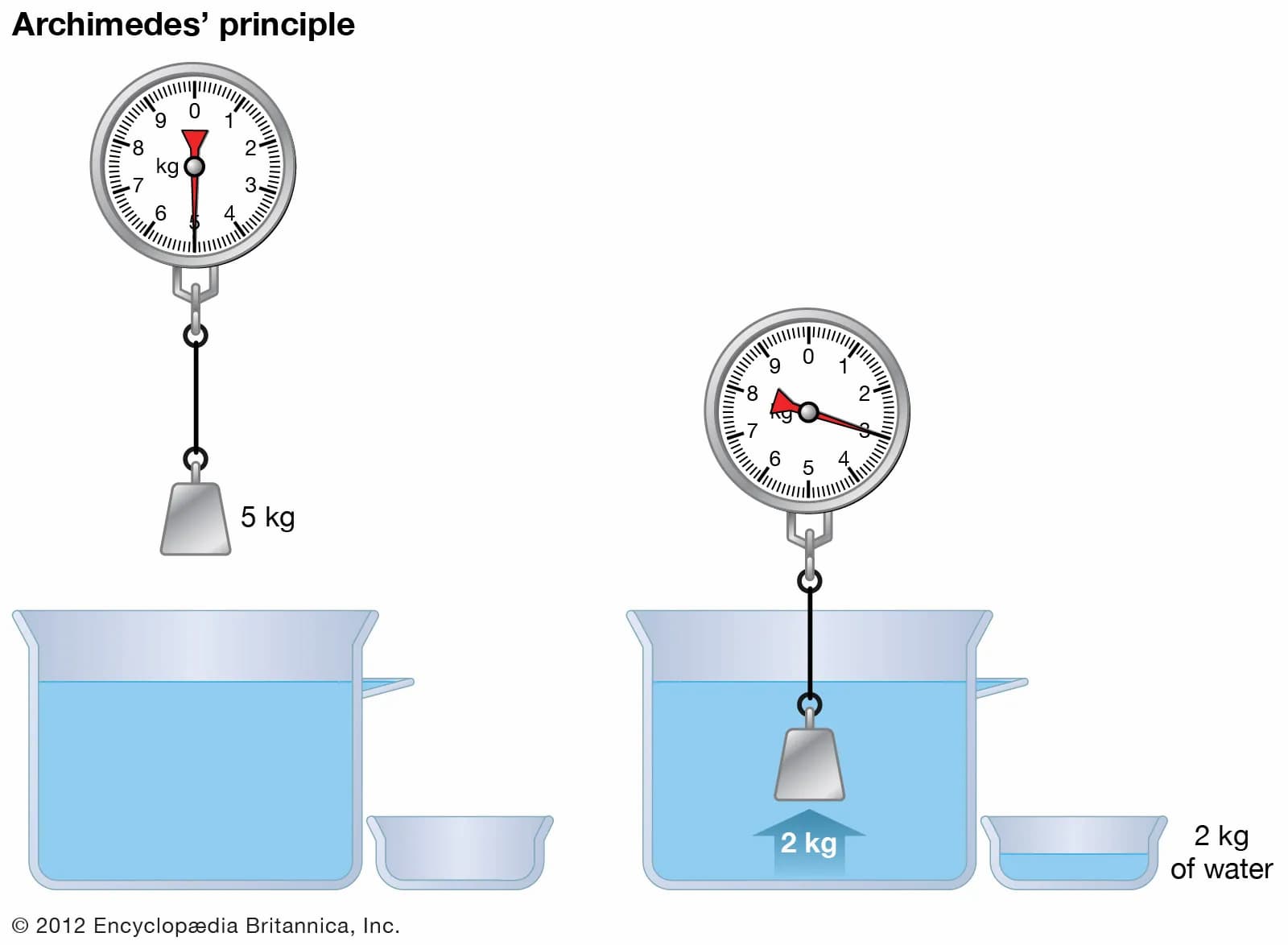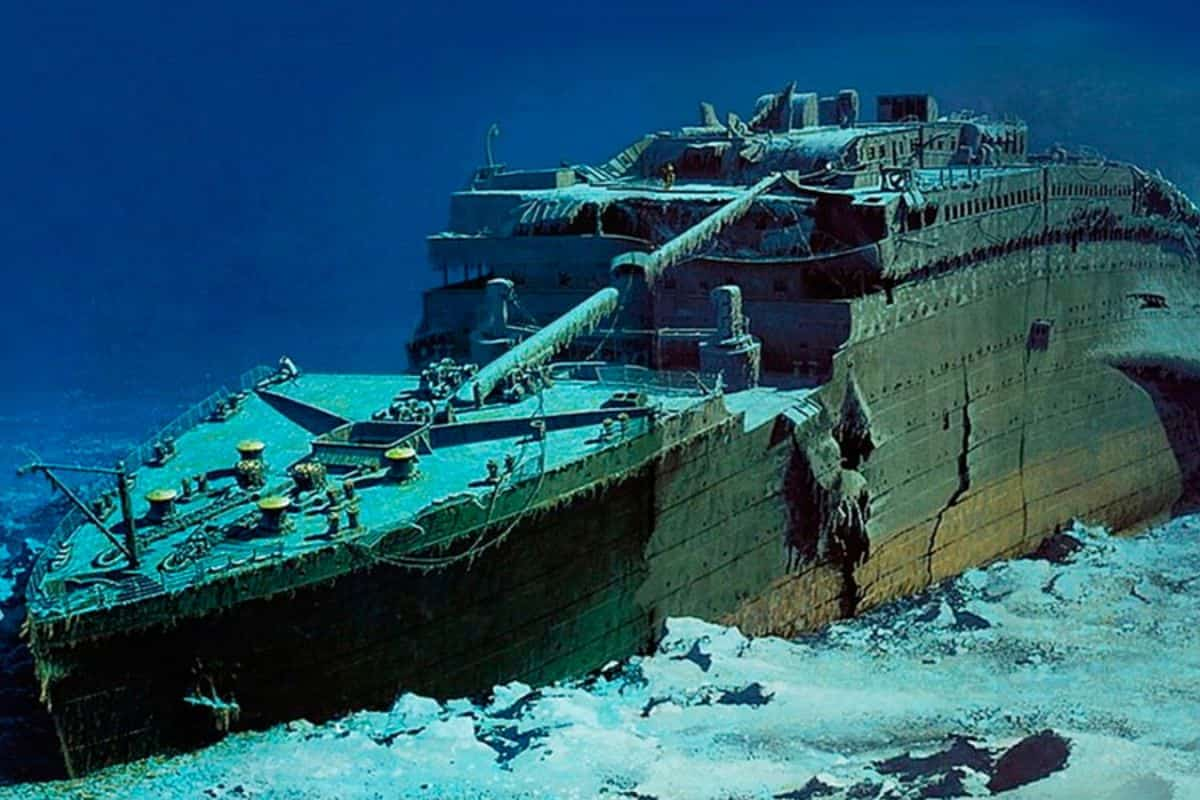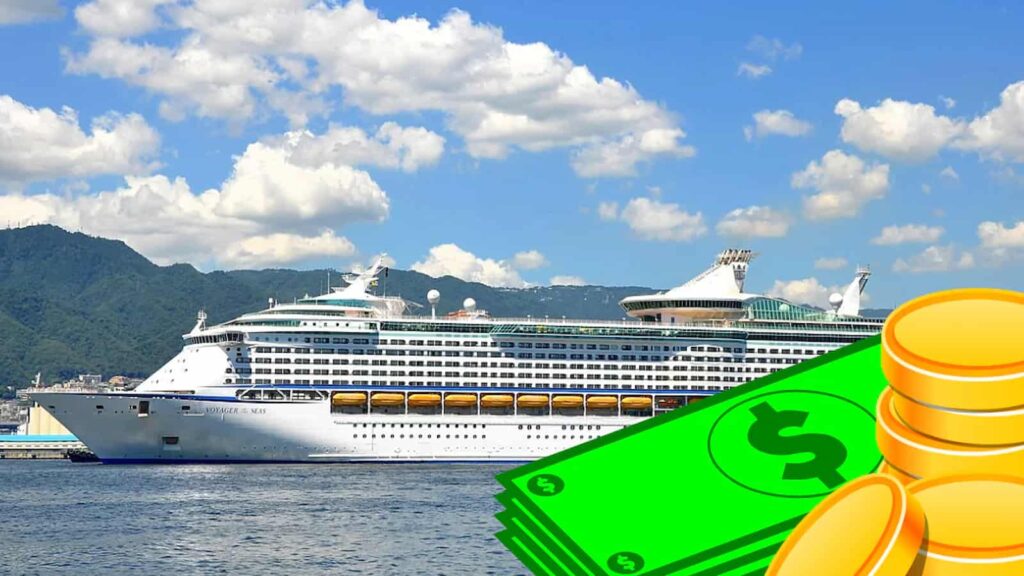How Cruise Ships Float on Water: The largest cruise ship on Earth, Royal Caribbean’s Wonder of the Seas, is the best example of what happens when something heavy doesn’t sink to the bottom of the ocean.
The largest cruise ship in the world weighs 236,857 tons and has 21 restaurants, 14 bars, three water slides, a mini golf course, and more. Not to mention that it can accommodate 7,000 passengers.
Even with their full-fledged waterparks, bars, and rock climbing walls, enormous ocean ships are known to float. However, have you ever questioned why?
How Cruise Ships Float on Water? Explained
Because cruise ships can shift water equivalent to their mass, they can float. Even the biggest cruise ships can float because of their hollow interior, low center of gravity, and U-shaped hull.
Furthermore, the wide U-shaped hull of cruise ships is intended to help displace water, add buoyancy, and facilitate smoother sailing.
Science Behind Boat Flotation
After learning the fundamentals, let’s examine some of the physics underlying cruise ships’ ability to float.
Density of Objects and Floatation
Generally speaking, anything that has an average density less than that of water will float.
An object’s average density is calculated by dividing its mass by its total volume.
A ship floats when its density is lower than that of water because the upward pull of the liquid is greater than the downward force of gravity.
Because oil has a lesser density, it floats. Lead, on the other hand, sinks due to its increased density.
Because of the huge volume of air inside the hull, cruise ships have a lower average density than water, which allows them to float.
Cruise Ship Smoking Policies: A Comprehensive Guide to Rules and Restrictions
The Principle of Buoyancy

According to the buoyancy principle, an item submerged in a liquid experiences an upward pull.
An object floats when its upward force is greater than its gravitational force. The object sinks if the upward force of the liquid is greater than the gravitational force.
The simplest way to see buoyancy is to visualize a submarine.
Ballast tanks on submarines can be filled with air or water. When the tanks are full of air, the submarine floats positively. Because air is less dense than water, the submarine can float.
The submarine sinks when its water tanks are full. This is a result of the water in the tanks being unable to offset the steel’s weight and density. A sinking object has a negative buoyancy.
It is feasible to add enough water and air to the ballasts to prevent the submarine from rising or falling. The sub has neutral buoyancy in this condition.
Submarine operations differ from those of boats. While ships don’t completely float, they also don’t sink.
A large portion of the ship is underwater, even though it is mostly positioned above the sea. The weight of the ship and the weight it is carrying—concerning passengers, crew, cargo, furnishings, food, etc.—determine how deep a ship dives.
Naval architects must determine how much weight a boat can support without approaching the point of negative buoyancy to guarantee that a ship floats.
This computation represents our debt to the Archimedes principle.
The Principles of Archimedes

The Archimedes Principle asserts that the buoyant force on an object immersed in a fluid is equal to the weight of the fluid that the object is displacing, according to NASA.
Put another way, when an object rests in water, the upward force it experiences is equal to the weight of the water it pushes away, or its displacement. The ship will sink if its weight is too great since the water displacement will never match the ship’s weight.
An object is lighter when it is submerged than when it is on land due to buoyant force.
As long as cruise ships can shift water equivalent to their mass, they will be able to float.
The ship floats because of the pressure of the ocean pressing up against the hull.
Fun Fact: Ships sit lower in rivers and lakes than in the ocean because freshwater has a lower density than seawater.
Design of Ships and Floating

A ship’s construction and design are significant factors. The displacement capacity of cruise ships is intended to be equal to their weight.
The hull is the most significant feature of the design. A hollowed-out shell, usually constructed of steel, makes up the hull.
Enough air is inside the hollowed-out shells to reduce the vessel’s average density below that of water.
Moreover, lighter materials like aluminum are used on the top decks, whereas steel is mainly utilized on the bottom decks. Cruise ships don’t capsize because of the materials used, which also keeps the ship lightweight.
The shape of the hull also has a big impact on water displacement. The hulls of large cruise ships are U-shaped. The design allows water to flow away from the vessel by providing greater water displacement.
Additionally, by reducing drag and giving passengers a more stable ride, the round-bottom hulls aid in preventing seasickness.
That’s not all, though. Naval architects also have to take into account the weight of the cargo, passengers, crew, and engines. To float, the ship and everything on board need to have a density lower than that of water.
Plimsoll at the port by the side of a bulk carrier. The water level cannot be higher than the line when a ship is being loaded. Another name for this line is the Plimsoll Line or Load Line.
You may have observed ship markings along the shore. In honor of Samuel Plimsoll, the marking’s originator, it is known as the Plimsoll line.
The Plimsoll line is a reference mark on a ship’s hull that denotes the maximum depth the vessel can safely immerse when loaded with goods, according to the National Ocean Service.
The ship’s construction, size, kind of cargo, water density, and season all affect the depth.
How to Save Money on Disney Cruise Costs in 2024
Additional Uses for Buoyancy
The concept of buoyancy is not limited to ships. Here are some instances of buoyancy in action:
- Submarines: Submarines use ballast tanks to control buoyancy. The sub may stay below the surface for extended periods when the tank is filled with water. The submarine can float back to the surface by releasing the air in the ballast tanks.
- Hot Air Balloons: To stay in the sky, hot air balloons rely on the laws of buoyancy. The balloon can float because the hot air inside it is less dense than the air outside. The balloon gradually descends to the ground when the hot air is released.
- Life jackets: A vital piece of equipment for preventing drowning is a life jacket. Because the vest is composed of lightweight materials, the wearer’s total density is reduced.
- Swimmers: The air in their lungs allows them to float. When the lungs are full, the air expands like a balloon, keeping the swimmer afloat.
What led to the Titanic’s submersion?

Not many ships have gone down, but none are as well-known as the Titanic. The Titanic was the world’s largest and fastest ship at the time.
What, then, led to the Titanic’s sinking?
The Titanic struck an iceberg off the coast of Newfoundland on the evening of April 14, 1912. The ship began to take in water due to the hull’s rip. As is well known, the water increased the ship’s density, which is why it sank in the North Atlantic.
The reason the Titanic hit the iceberg is the subject of various theories. Many contend that the captain was moving too quickly to cross the freezing river safely. According to a different scenario, the radio operator on board the Titanic disregarded the Californian, a nearby ship, when she warned of the ice field.
Whatever the case, the ship finally filled with water and sank. The ship’s average density increased as it filled with water until it was no longer able to float.


